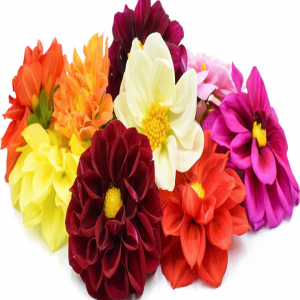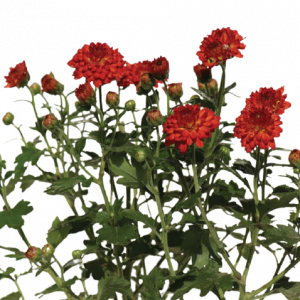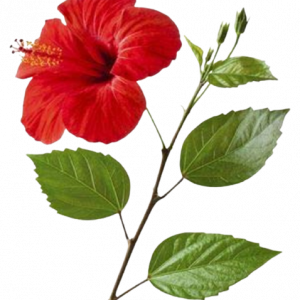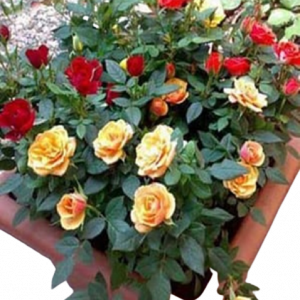GENDA/MARIGOLD PLANT
200 in stock
Marigold is a very useful and easy to grow flowering plant. It is mainly an ornamental crop. It is grown for open flowers, garlands and landscapes. It is also a good source of yellow pigment in chicken feed. Its flowers are sold open in the market and making garlands. Due to the different height of the marigold and the shade of different colors, it has great importance in enhancing the beauty of the landscape. Along with this, it also plays an important role in decorating the mandap in marriages. It is a very suitable plant for beds and herbaceous borders. The ornamental value of this plant is very high as it can be cultivated throughout the year. And its flowers have great importance in religious and social festivals. African marigold and French marigold are mainly cultivated in India. It is also called “Galgota” in Gujarati language and ‘Hanjari Gajra Phool’ in Marwari language.
₹120.00 ₹240.00
Marigold is very popular among Indian flowers and can be grown easily. It is a commercially attractive crop due to its high flowering in less time, its availability in many colors and non spoilage and can be grown in all seasons and soils.
Use
Marigold cut flower is especially suitable for making garlands. In fame it is second only to jasmineis in place. Sometimes the whole plant is cut and used for decoration. Marigold is grown in beds, for borders and also in pots. Natural color from marigold petals and nematode worm medicines from its plants. Dwarf varieties, in particular French marigolds, are very suitable for swing baskets, window boxes, rock gardens and ledges. French marigolds can also be planted along roadsides. It is also used for making flowers and rangoli.
classification
Marigold is mainly classified into two categories: first African marigold and second French marigold. African marigold is larger and French marigold is shorter in length.
(a) African marigold (Tagetes erecta): It is very spreading and tall growing (about 90 cm) and its flowers are large (about 15 cm) and different colors, such as lemon yellow, There are bright yellow, golden yellow, orange and almost white.
Varieties: Pusa Orange, Pusa Basanti, Cocktail Jack, Genia Gold, Menling Smile, Fista, Titania, Yellow Sushim, Giant Double African Orange, Giant Double African Yellow, First Lady, Crown of Gold Smith, Yellow Stone, Mistan, Spun Gold.
(b) French marigold (Tagetus patula): These are small in size and very dense. Length approx 30-37.5 cms. it occurs. Flowers are of single and double type. They are found in different colors like yellow, orange, golden, mahogany, spotted, red and mixed colors. The dwarf dual varieties are Rusty Red, Flame and Spray. Other single varieties are Star of India Vonita, Orange Pittiello, Lemon Drop and Harmony.
Other species are Tgettes tinufolia with varieties Golden Gem, Lulu, Pumila ursula.
Soil and Climate Requirements
Soil: Marigold can be grown successfully in any soil. Still, if the soil is fertile, water-retainable and has proper drainage system and the pH of the soil is good. If it is between 7.0-7.5, then the yield will be very good.
Climate: The temperate climate is very suitable for good growth and high flowering of marigold. High temperature greatly affects the yield and quality of flowers. Due to extreme cold frost, the flower turns black and dies. Flowers are planted and sown in winter, summer and rainy season respectively. Therefore, we can take marigold flowers throughout the year.
In the plains of northern India, good flowering is obtained during the winter season usually from October to April. Due to high temperature and long days in summer, vegetative growth is more and flowers bloom less. Due to this the size of the flower becomes smaller.
Soil preparation: After plowing the soil 2-3 times, mix well rotten manure of 30 tonnes per hectare completely. Keep the length of the beds as per your convenience.
Planting: There are two main methods of planting marigold – first by seed and second by cutting. Plants prepared by seed are tall, good growth and flowering, so it is preferred more than cuttings.
Seed rate and nursery planting: The proper temperature for germination from seed is between 18-300 centigrade respectively. About 1.5 kg of seed is required for one hectare. marigold seedsCan be grown in boxes, in flat or in high beds. The nursery beds of 3 x 1 meter size should be well prepared and mixed with 10 kg manure per square meter. 8-10 such beds are suitable for planting saplings in an area of one hectare. Spray linden dust or furadan dust to protect against ants and other insects. The seed is sown by line method or by spraying method. But in the spraying method, the more dense plants should be uprooted and planted elsewhere. Cover the seed with light soil or sand or sifted leaf compost and keep watering lightly with fine husk to retain moisture. But the nursery bed should not be too wet.
Cutting: This method is generally used to maintain the purity of the species. It has about 10 cm. Key cutting to Ceredix Powder No. They are treated with 1 or rutex powder and planted in the sand, due to which the roots come out quickly in shearing. Later they are planted in beds and pots.
Time of planting seeds or cuttings: Marigold crop can be planted thrice a year, i.e. in winter, summer and rainy season. The timing of sowing and planting seeds for each season is as follows:
weather
seed cutting time
planting time
Rain
end of june to first week of july
by the second week of august
winter
by mid september
until mid-October
Heat
first week of january
in the first week of February
Planting of sedges: The sedges are easily established after planting. Due to this, the roots develop faster, which reduces the death rate of the plants. 3-4 leaves must appear in the middle of a month. Weeds should be planted in well-prepared beds in the evening, especially during the rainy and summer season, so that the weeds can absorb the seasonal shock and get established overnight.
Distance: Proper distance is necessary for good growth of the plant and production of flowers. African marigolds require more distance than French marigolds. African Marigold is 40 X 40 cm. And the French marigold is 20 X 20 cm. should be placed at a distance.
Manure and Fertilizer: For best flower yield 100 kg Nitrogen (225 kg Urea), 100 kg Phosphorus (625 kg Single Super Phosphate) and 100 kg Potash (165 kg Murate of Potash) should be applied while preparing the field and One month after planting weeds, weeding should be done by applying 100 kg nitrogen (225 kg urea) per hectare.
Weed Control: Weeds increase more in the rainy season, so after planting weeds, weeding should be done from time to time. Otherwise, it will affect the growth and production of the entire crop.
Irrigation: Marigold is a herbaceous plant in which it grows very rapidly in the early stage. Its vegetative growth is completed in 55-60 days. Then comes the time of flowering. It is necessary to have adequate amount of moisture in the soil at all stages. The scarcity of water at any stage affects its growth and production. The amount of water and the interval of irrigation mainly depends on the soil and season. Light soils require more water than heavy soils. If the rainfall is normal then less water will be used, but if there is less rainfall then more water will be used. The plant can survive in drought for up to 10 days, but this has a bad effect on flower production. Watering is done at an interval of 4-5 days from April to June.
Pruning branches: African marigolds cut off the upper stem to allow adjacent branches to grow as well. Flowers bloom more abundantly and more evenly as adjacent branches grow. The plant will give more flowers if the main branch is cut after 40 days of planting. This is not required in French marigolds.
plucking, packing and shipping flowers
Harvesting of flowers: Marigold should be plucked only when the flower is fully grown. The size of the flower depends on the variety. Flowers should be plucked in cooler times, especially in the morning or evening. By irrigating the field, the flower can be kept for a long time after plucking. Flowers should be plucked by hand. By plucking the flowers regularly, its productivity increases.
Packing: Marigold flowers are mostly used for making garlands. Therefore, to send to the nearest market, we use sacks made of jute and bamboo baskets are used to send them far away.
Transportation: Various modes of transport are used such as rickshaw, bus, train etc. It all depends on the distance.
Production: The productivity of flowers depends on the season of planting as well as on various agricultural activities. On an average, fresh flowers can be obtained at 150-175 quintal per hectare in winter, 100-120 quintal per hectare in summer and 200-225 quintal per hectare in rainy season.
diseases and insects
Marigold is generally free from the infestation of diseases and insects. However, occasionally the effects of diseases and insects have been observed.
Diseases and Prevention: The following main diseases have been observed in marigolds –
(1) Plant rot: In this disease the plants start rotting from the surface of the ground. For its prevention, spraying of a solution prepared at the rate of 2 grams per liter of water should be done.
(2) Leaf spot, blight and bud rot: In this disease brown spots appear on leaves, stems and flowers. For this, spray Dithane M.-45 fungicide solution prepared at the rate of 3 grams per liter of water.
(3) Powdery Mildew: In this disease, a white powdery appearance appears on the plants. For its prevention, 2.5 grams of sulfur powder or 1.5 ml of Kerethan (40 EC) can be used. Took. The solution prepared at the rate of per liter of water should be sprayed.
Insects and Prevention
(1) Red spider: This insect makes the plant white by sucking the sap of the plant. For its control, Roger 35 EC. Or Nuvacron 40 EC. Spraying of 1 ml per liter of water. Do it by putting
(2) Hairy Larva: This insect damages the leaves by eating them. Nuwan 50 EC for its prevention. Or Thyodan 35 BC. Spraying of 1 ml per liter of water. Do it by putting
Based on 0 reviews
Be the first to review “GENDA/MARIGOLD PLANT”
You must be logged in to post a review.



















There are no reviews yet.